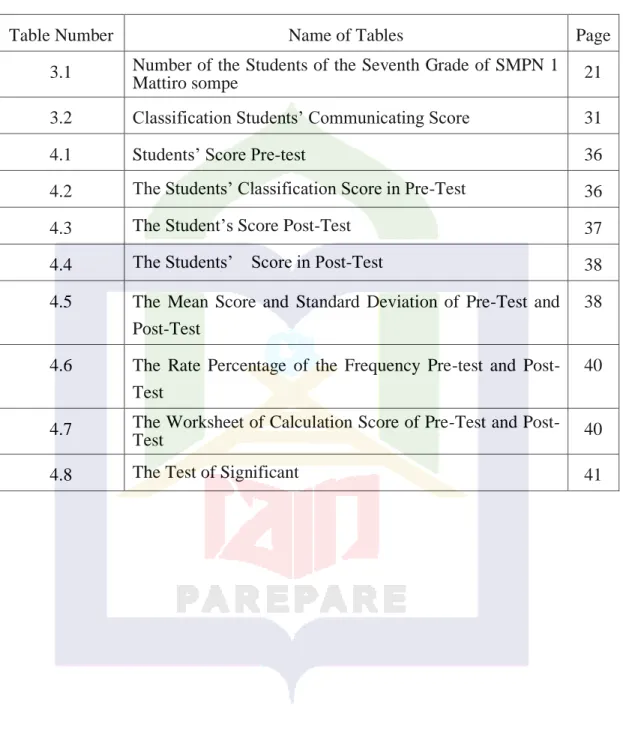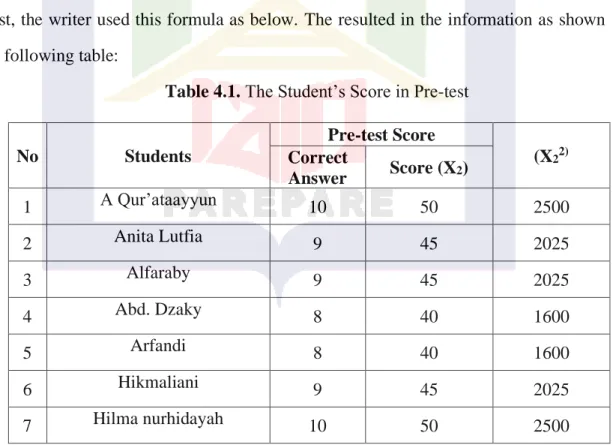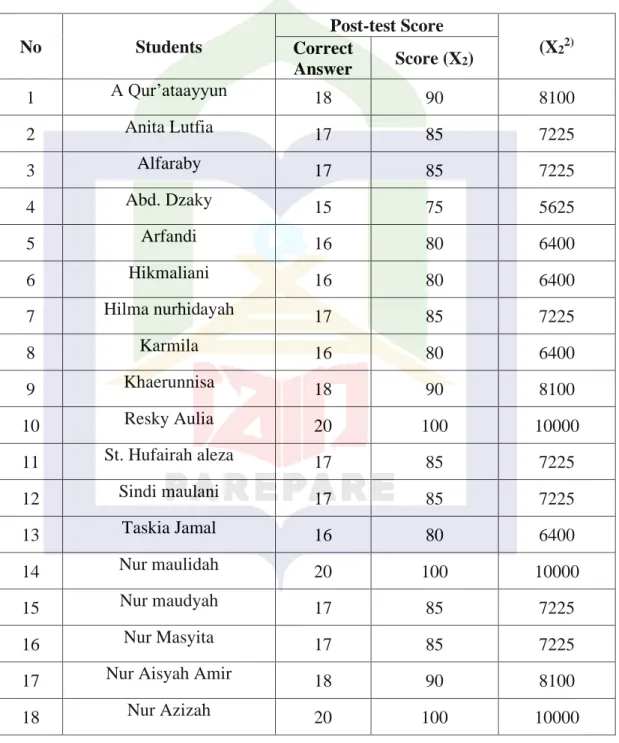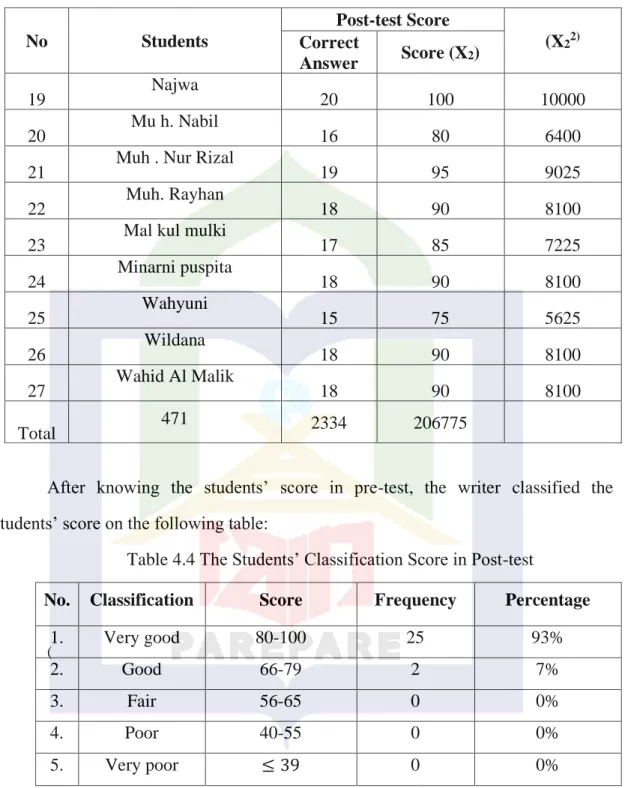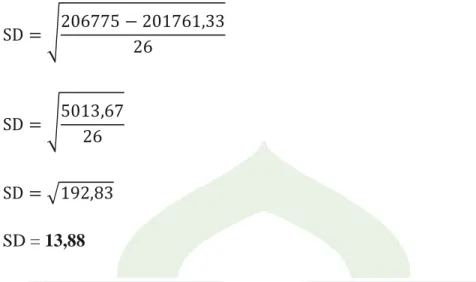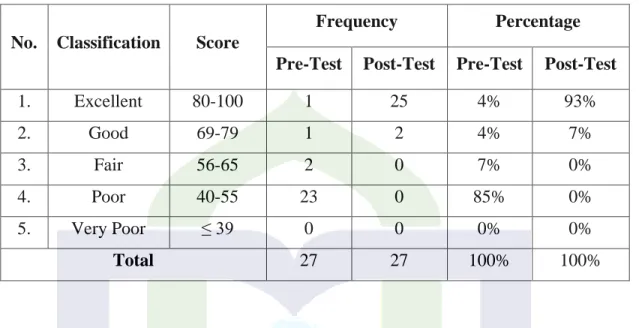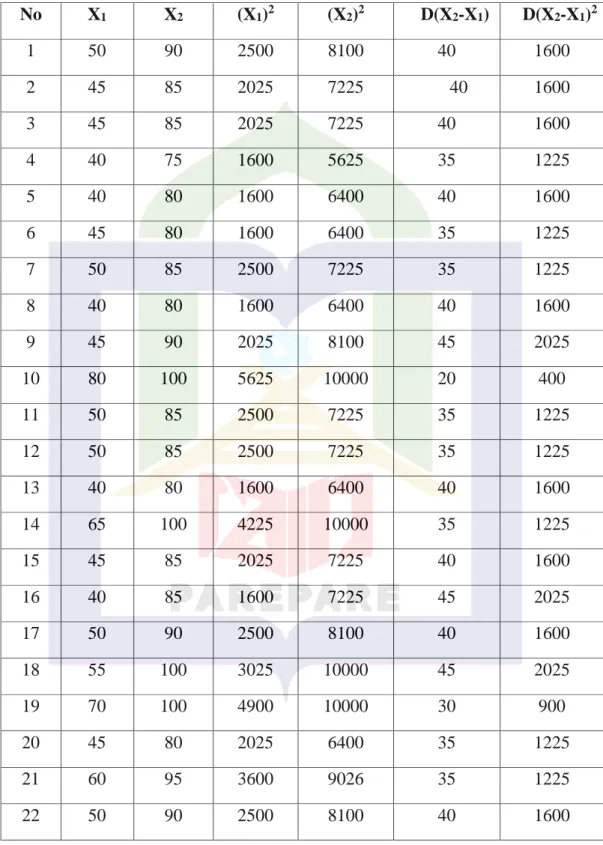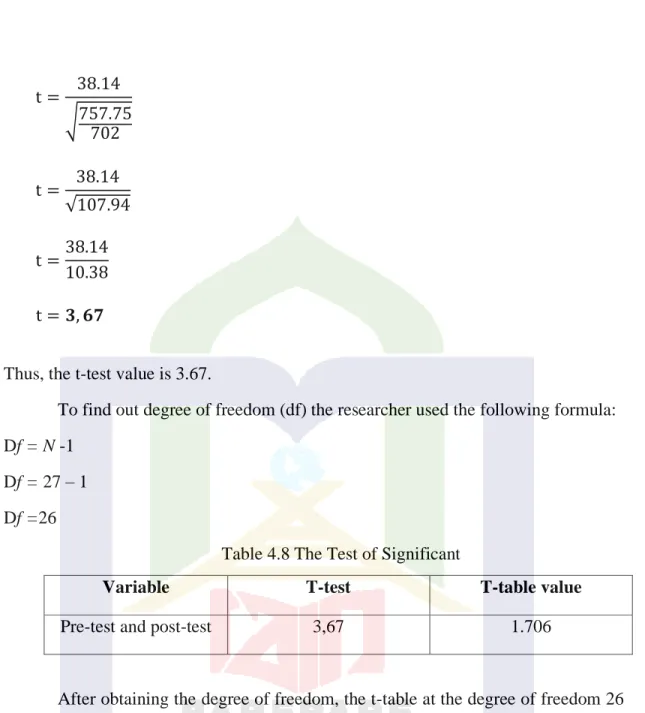Submitted to the English Education Program of the Tarbiyah Faculty of the Islamic State Institute of Parepare in partial fulfillment of the requirements for the degree of. In partial fulfillment of the requirement for attaining the degree of Sarjana Pendidikan (S.Pd). Alhamdulillah rabbil 'Alamin, Praise is only for the Almighty Allah SWT. Thanks for God's love and mercy upon us, the most gracious and the most merciful, the lord of the universe, and the master of the day of judgment, the king of the world. kings, who has given his blessing to the writer for completing this skripsi entitled: Using Color Coded Co-op Maps in the Seventh Grade of SMPN 1 Mattiro Sompe Kabupaten Pinrang.
The writer first wishes to express her gratitude and love to her family, her beloved parents Burhan Razak and Norma, for their love and sincerely pray for him. And also to other relatives, because he is aware that without their support and help, he could not complete this Skripsi. All lecturers and staff of the English program who have already taught the writer during her studies at IAIN Parepare. As the president of SMPN 1, Mattiro Sompe, who allowed the writer to observe the research in the school.
All those who gave their support to write this "Scripture" the writer could not mention one by one. Finally, the writer realized that this skripsi still had some weaknesses and was still not perfect.
ABSTRACT
LIST OF TABLES
LIST OF APPENDICES
INTRODUCTION INTRODUCTION
- Background
- Research Question
- Objectives of the Research
- Significance of the Research
Teaching vocabulary was similar to teaching other social sciences, which required an appropriate technique or method with color-coded cooperative cards. According to Logan, all color-coded co-op maps use a model in cooperative learning that emphasizes and is based on learning using memory. Additionally, Kagan stated that the color-coded co-op maps are one of the mastery designs in cooperative learning.
Based on the above reason, the study aims to conduct a study entitled “Using Color Coded Co-op Cards to Increase Vocabulary Mastery in the Seventh Grade of SMPN 1 Mattiro Sompe. What is student vocabulary like before and after using color-coded co-op cards in seventh grade SMPN 1 Mattiro Sompe. Uses color-coded co-op cards that can increase students' vocabulary mastery in SMPN 1 Mattiro Sompe's seventh grade.
Using color-coded engagement cards before and after using a method to improve vocabulary mastery in seventh grade SMPN 1 Mattiro Sompe. Using Color Coded Co-op Cards in Increasing Students' Vocabulary Mastery in Seventh Grade SMPN 1 Mattiro Sompe.
REVIEW OF RELATED LITERATURE
- Some Pertinent Ideas
- Conceptual Framework
- Hypothesis
- Operational Definition of Variable and Variable of the Research
Color-coded co-op cards are a weeklong series of activities to help students remember content. The color-coded co-op cards allow students to pool and count their team improvement points. All students preview the week's memory items. 2) Step 2 Students create color-coded co-op maps.
Students who improved more than .. last week or reached a certain level may be asked to be recognized by the class. First, Thimothi, Rosita Ningrum, Effective Learning of Color-Coded Collaborative Cards, Collaborative Learning Towards Kanji Learning. Alternative Hypothesis (H1) = Student's vocabulary mastery improved significantly by using color-coded Co-Op card in seventh grade SMPN 1 Mattiro Sompe.
The dependent variable is vocabulary mastery and the dependent variable is color-coded co-op card media. Color-coded co-op cards are a medium used to improve students' vocabulary mastery, with the researcher using cards in teaching.
RESEARCH METHOD
- The Research Design
- Location and Duration of the Research
- Population and Sample
- The Instrument of the Research
- The procedure of Collecting Data
- Treatment
The population of this study consists of the seventh grade students of SMPN 1 Mattiro Sompe students in the academic year 2021. The researcher used a random sampling technique involving one class for use as a classroom experiment, VII. The pre-test was used to find out the students' prior knowledge before using color-coded co-op cards, in this case a vocabulary test, and a post-test to find out the students' improvement.
Before giving a treatment, the researcher gave a student the Pre-test for the first activity in the first meeting. The researcher introduced and applies how the method that applied in the classroom, called "Color Coded Co-Op Card" on the students e.g. The researcher gave the theme the vocabulary, which is the things in the classroom vocabulary. g.
The researcher asked the students to do the same as the procedure that was explained. j. The researcher told the students to work with their pairs in their chairs k. The researcher checked each pair about the vocabulary they have. The researcher asked each group to work well as a team to guess the picture and choose the correct color spot in each picture. me.
The researcher asked the representatives of each group to write their answers on the white board. Data were collected through quantitatively analyzed percentage test to measure student achievement.
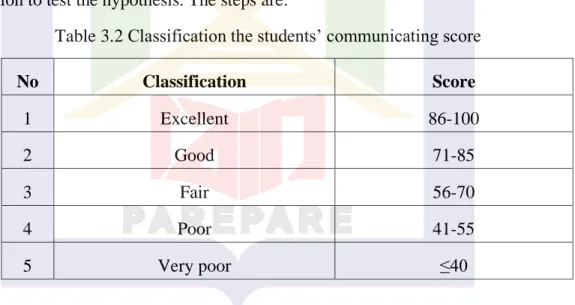
FINDINGS AND DISCUSSION
Findings
After knowing the result of the students in the pre-test, the writer classified the results of the students in the following table:. The data in the above table showed that in the pre-test one student got very good score, one student got good score, two students got fair score, twenty three got poor score and no student got very poor score. Based on the pre-test score, it showed that the score is 49.07 and from that analysis, it could be seen that almost the student's vocabulary was still low or absent due to the low score.
After determining the mean score (X1) of the pre-test, it was 49.7 and the standard deviation of the pre-test was 9.66. This showed that the students' vocabulary fell into the poor category. The above table shows students' classification score and frequency percentage in the post-test. Based on the data, it is shown that using color-coded co-op cards can increase students' vocabulary as most of them achieved very good and good score.
Below is the calculation process to find out the average score based on the calculation of the student's score in Table 4.4 after the test. Based on the result of the post-test, it was found that the result was 86.48 and that analysis showed that almost the students achieved a very good score. Test mean score standard deviation (SD). Data source: the mean score and standard deviation of pre-test and post-test).
The standard deviation of the pre-test was 9.66, while the standard deviation of the post-test was 13.88. As a result on this item, the mean score of the posttest was greater than the mean score of the pretest. The data from the table above indicates that the rate percentage of the pre-test is.
The percentage in post-test that students got a very good score was higher than the percentage in pre-test. The following was the table to find out the difference of the mean score between pre-test and post-test. This therefore indicated that there was a significant difference between the students' pre-test and post-test results.
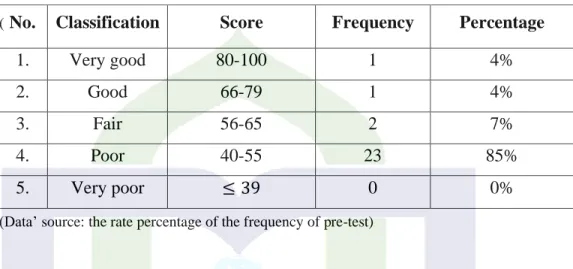
Discussion
- The improvement of the Students’ Vocabulary Mastery through Color Coded Co-op Cards
- Before and After using Color Coded Co-op Cards
The researcher gave some corrections to the students' paper which did not fit with the main idea of the material. Monday 7 March 2021, In the first meeting, the researcher opens the class and greets the students. Thursday, March 11, 2021, in the second meeting, the researcher opened the class and greeted the students, and then absent the students in the classroom, the researcher introduced and applied how the method that applied in the classroom is called "Color Coded Co-Op Card" ” to the students .The researcher asked the students to work in pairs. The researcher gave the theme for the vocabulary, which are the things in the classroom vocabulary, after which the researcher called two students to come forward in the class.
The researcher asked the students to work the same as the procedure that has been explained, telling the students to work with their pairs in their chairs. The researcher examined each pair for the vocabulary they practiced, the researcher concluded. On Monday, March 15, 2021, in the third meeting, the researcher opened the classroom and greeted the students.
Since the researcher did not have the students in the classroom, the researcher asked the students to work in pairs. On Thursday, March 18, 2021, during the fourth meeting, the researcher opened the class and greeted the students. The researcher asked the representatives of each group to write their answers on the whiteboard.
On Monday 22 March 2021, during the five meeting, the researcher opened the class and greeted the students. On Thursday 25 March 2019, In the last meeting after the researcher gave treatment to the students, she took a post-test at class VII.1 of SMPN 1 Mattiro Sompe Kabuaten Pinrang. It was proven that the result of the pre-test was given a very low score, the average score of the pre-test was 46.07. After that, the researcher gave the treatment using color-coded cooperative cards.
This means that the students' vocabulary improved with the help of the color-coded co-op cards. The students were able to improve their vocabulary and the researcher also gave some instructions to help the students answer the question. The discussion process, before the researcher gives the material, the researcher first explains how to enjoy the process of learning English, and the researcher gives the students time to ask the researcher when they do not understand it yet.
CONCLUSION AND SUGGESTION
Conclusion
Suggestion
BIBLIOGRAPHY
Enhancing Students' Vocabulary Mastery Through Crossword Puzzles, North Sumatera: English Department of Education National Institute of Islamic Studies, 2013.
APPENDICES
- Kompetensi Inti
- Kompetensi Dasar dan Indikator
- Tujuan Pembelajaran
- Materi Pembelajaran
- Fungsi Sosial dari ungkapan
- Struktur Teks ( gagasan utama dan informasi rinci )
- Unsur Kebahasaan dari ungkapan sapaan dan pamitan, yaitu
- Metode Pembelajaran
- Langkah-langkah Kegiatan Pembelajaran 1. Pertemuan Pertama
- Mengkomunikasikan
- Mencoba
- Mengumpulkan informasi
- Penilaian
1 Amatilah ungkapan atau kata yang digunakan untuk memberi nama suatu benda, nomornya, dan letaknya yang dekat dengan kehidupan siswa sehari-hari. Mengidentifikasi ungkapan-ungkapan yang digunakan untuk memberi nama suatu benda, nomornya, dan letaknya yang dekat dengan kehidupan siswa sehari-hari. Dengan menggunakan ungkapan untuk menyatakan nama suatu benda, besarannya, dan letaknya yang dekat dengan kehidupan siswa sehari-hari.
Media, Alat dan Sumber Belajar 1. Bahasa Inggris Ketika Bahasa Inggris Membunyikan Bel SMP/MTs Kelas VIII.
CURRICULUM VITAE
